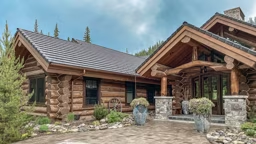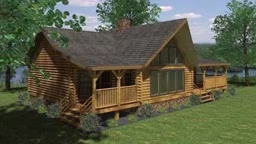
Photo: Scott Graham / Unsplash
When you decide to build a new log home rather than purchase an existing house, a once-(maybe twice)-in-a lifetime adventure begins.
While you enjoy distinct advantages with custom construction, you also assume a measure of risk. True, while you control the design, materials, finishes and landscaping, among other elements, you must also trust your log home producer, builder and a host other trade professionals to realize your vision. You also commit to a process that may take six months to a year to complete. If you do your due diligence, odds are everything will work out according to plan, but one area where you won’t want to leave anything to chance is in the financing of your custom log home.
For most, financing usually starts with a construction loan, and then the long-term, or permanent loan (mortgage) must be addressed down the road. While it’s possible to finance construction and permanent funding separately, such an approach would include two loans, each with its qualification requirements, underwriting processes and associated closing costs. Immediately, the time, effort and out-of-pocket expense involved would bring this kind of divided approach into question. The solution is a construction-to-permanent loan.
Most financial institutions offer such a loan package, and it’s worthwhile to ask about availability early when approaching a bank or other financing source. The biggest benefits are that only one closing is required, and the transition from construction financing to permanent loan is virtually seamless. Owners must be aware of key dates, including those allotted for the construction period and the date of conversion to a permanent mortgage. Should the project encounter a delay, most lenders are flexible to extend the construction period upon request.
Remember that construction loans are funded following the owner’s investment of the required cash or real estate equity. Financial institutions retain control of the loan proceeds, which are disbursed following a request for a draw and an inspection that confirms that the work specified in the draw request has been performed according to plans and generally accepted construction standards. Throughout the construction period, the owner pays monthly interest only on the drawn balance, and interest is routinely calculated at a variable interest rate with Wall Street Journal Prime Rate serving as the index. No interest is charge on undisbursed funds.
See also: Understanding Construction Loans
Adam Headley is a writer and career banker with more than 30 years of experience in finance and lending. He has written extensively on the varied aspects of building, purchasing and owning a log or timber home.








_11868_2024-09-17_08-44-256x288.avif)


